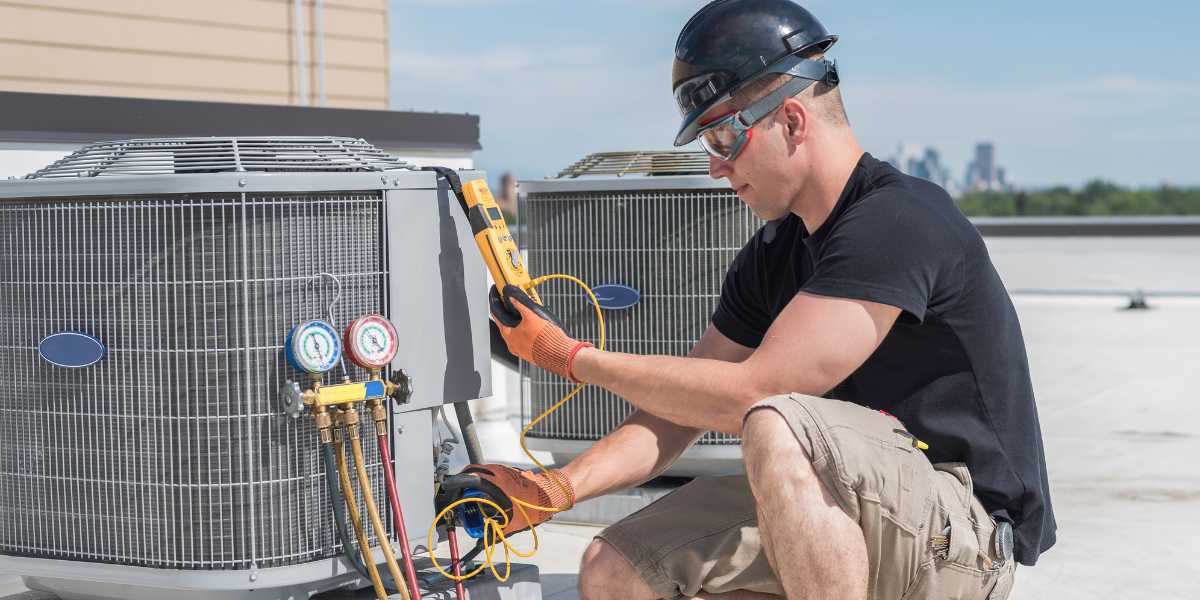Learn about the thickness of radiant floor heating systems, including typical dimensions for electric and hydronic setups, and how floor type and insulation impact installation depth.
How Thick is Radiant Floor Heating? Understanding the Installation Depth
Radiant floor heating is a popular choice for homeowners and businesses looking to achieve efficient, comfortable, and evenly distributed warmth. One of the main questions in radiant floor heating installation is: “How thick does the radiant floor heating need to be?” This guide delves into the factors affecting the thickness of radiant floor heating systems, the different types of radiant heating, and best practices for installation.
1. Introduction to Radiant Floor Heating Systems
Radiant floor heating works by warming the floor surface, which then radiates heat upward, warming the room and occupants directly. This type of heating is often more efficient than traditional forced-air systems, as it reduces heat loss and can maintain a consistent temperature.
Radiant floor heating systems fall into two main categories:
- Hydronic Systems: These systems use hot water circulated through pipes embedded in the floor.
- Electric Systems: Electric heating cables or mats are installed beneath the flooring material.
The thickness of a radiant floor heating system depends on the type of system used, the flooring material, insulation requirements, and the heating efficiency desired.
2. How Thick is a Radiant Floor Heating System?
The thickness of radiant floor heating systems varies based on several factors. Below, we’ll look at the typical dimensions for both hydronic and electric systems.
2.1 Hydronic Radiant Floor Heating Thickness
Hydronic systems generally require more depth than electric systems due to the pipes that circulate water. Here’s a breakdown of the typical layers involved in a hydronic radiant floor system:
- Subfloor Base: The foundation layer, which can be concrete or wood.
- Insulation Layer: Essential to prevent heat loss downward, typically 1-2 inches thick.
- Piping/Tube System: Tubing, usually around 1/2 inch in diameter, circulates heated water.
- Concrete or Floor Overpour: A concrete layer (often 1.5 to 2 inches thick) is poured over the pipes to encase and protect them.
Total Thickness: Hydronic systems generally require a thickness of 2 to 4 inches, depending on insulation and concrete depth. In cases where additional insulation or thicker flooring material is used, the total thickness can approach 5 inches.
2.2 Electric Radiant Floor Heating Thickness
Electric systems are thinner than hydronic systems, making them suitable for renovations where adding significant floor height may be an issue. Here are the typical layers:
- Subfloor Base: The foundational layer, similar to hydronic systems.
- Heating Cables or Mats: Electric cables or pre-configured mats are typically 1/8 to 1/4 inch thick.
- Thinset or Self-Leveling Compound: Thinset or compound is applied over the cables or mats, often around 1/8 to 1/4 inch thick.
Total Thickness: Electric radiant floor heating systems typically add about 1/4 to 1/2 inch to the floor height, making them a convenient choice for retrofitting.
3. Factors Influencing the Thickness of Radiant Floor Heating
The final thickness of a radiant floor heating installation depends on several factors:
3.1 Type of Radiant Heating System
As noted, hydronic systems are thicker due to water piping and the concrete layer required for stability and heat retention. Electric systems are generally thinner, using heating mats or cables, making them ideal for renovations or areas where floor height is limited.
3.2 Flooring Type
The choice of flooring material can influence the heating system’s thickness:
- Tile: Tiles require a thicker layer of thinset or mortar, adding to the overall height.
- Laminate or Hardwood: These materials require an underlayment, often increasing the thickness by 1/8 to 1/4 inch.
- Carpet: Carpets require padding, which can add another 1/4 inch to the system’s height, but this should be done with caution as carpet can reduce heating efficiency.
3.3 Insulation Requirements
Effective insulation is essential to prevent downward heat loss and improve energy efficiency. While insulation generally adds 1 to 2 inches to the overall thickness, it can reduce long-term energy costs and ensure heat moves upward efficiently.
3.4 Thermal Mass and Concrete Overpour
Hydronic systems with a concrete overpour have increased thickness due to the need for thermal mass. A thicker concrete layer can improve heat retention and ensure more even distribution but may add an inch or more to the system.
3.5 Regional Building Codes and Standards
Some regions may have specific building codes regarding the installation of radiant floor heating, including insulation requirements and maximum floor height allowances, which can impact thickness.
4. Types of Flooring Compatible with Radiant Heating and Their Impact on Thickness
Not all flooring types are compatible with radiant floor heating. Here’s a look at popular flooring options and their impact on the system’s thickness:
4.1 Tile and Stone Flooring
Tile and stone are ideal for radiant heating as they conduct heat well. These materials usually require an additional 1/8 to 1/4 inch of mortar or thinset, adding slightly to the overall thickness.
4.2 Laminate and Engineered Wood
Laminate and engineered wood work well with radiant heating, but an underlayment is typically required. This underlayment adds 1/8 inch, making the total thickness manageable without compromising performance.
4.3 Carpet and Vinyl Flooring
Carpet can insulate against heat, reducing system efficiency. If carpet is used, it’s important to choose thin, dense carpeting to avoid excessive insulation. Vinyl can work with electric systems, but it’s essential to ensure it’s designed for radiant heat to avoid damage.
5. Installation Process and Best Practices for Optimal Thickness
The installation process for radiant floor heating varies by system type but involves a few general steps to ensure proper thickness and efficiency.
5.1 Prepare the Subfloor
For both hydronic and electric systems, the subfloor should be clean, level, and able to support the added thickness.
5.2 Install Insulation
Adding insulation can prevent heat loss and improve efficiency. For hydronic systems, rigid foam board insulation is common, whereas electric systems may use thinner insulation mats.
5.3 Place Heating Elements
- For Hydronic Systems: Secure pipes at a recommended spacing for even heat distribution.
- For Electric Systems: Lay heating cables or mats according to the manufacturer’s instructions.
5.4 Apply Overpour or Thinset
Hydronic systems typically require a concrete overpour to encase the pipes, while electric systems can be covered with a thinset or self-leveling compound.
5.5 Allow for Curing and Final Flooring Installation
The overpour or thinset should fully cure before installing the final flooring. Ensure that the added thickness aligns with thresholds, cabinetry, and other structural elements.
6. Benefits of Radiant Floor Heating Systems
Understanding the thickness required for radiant floor heating helps determine its feasibility in different spaces, and it offers numerous benefits:
- Energy Efficiency: Radiant floor heating operates at lower temperatures than traditional systems, saving energy over time.
- Improved Air Quality: Radiant heating doesn’t rely on forced air, reducing dust circulation.
- Even Heat Distribution: Radiant systems provide consistent warmth across the entire floor.
- Comfort: Heated floors eliminate the discomfort of cold surfaces during winter months.
7. When to Call a Professional for Radiant Floor Heating Installation
While DIY installation is possible for some electric systems, many factors make professional installation preferable:
- Complexity of Hydronic Systems: Installing hydronic radiant floor heating involves plumbing expertise and may require permits.
- Building Code Compliance: Professionals ensure the installation meets local building codes, especially regarding insulation and floor height requirements.
- Efficiency Maximization: A professional can ensure that the thickness and spacing are optimized for energy efficiency.
- Warranty and Maintenance: Professionally installed systems often come with warranties and maintenance options for added peace of mind.


